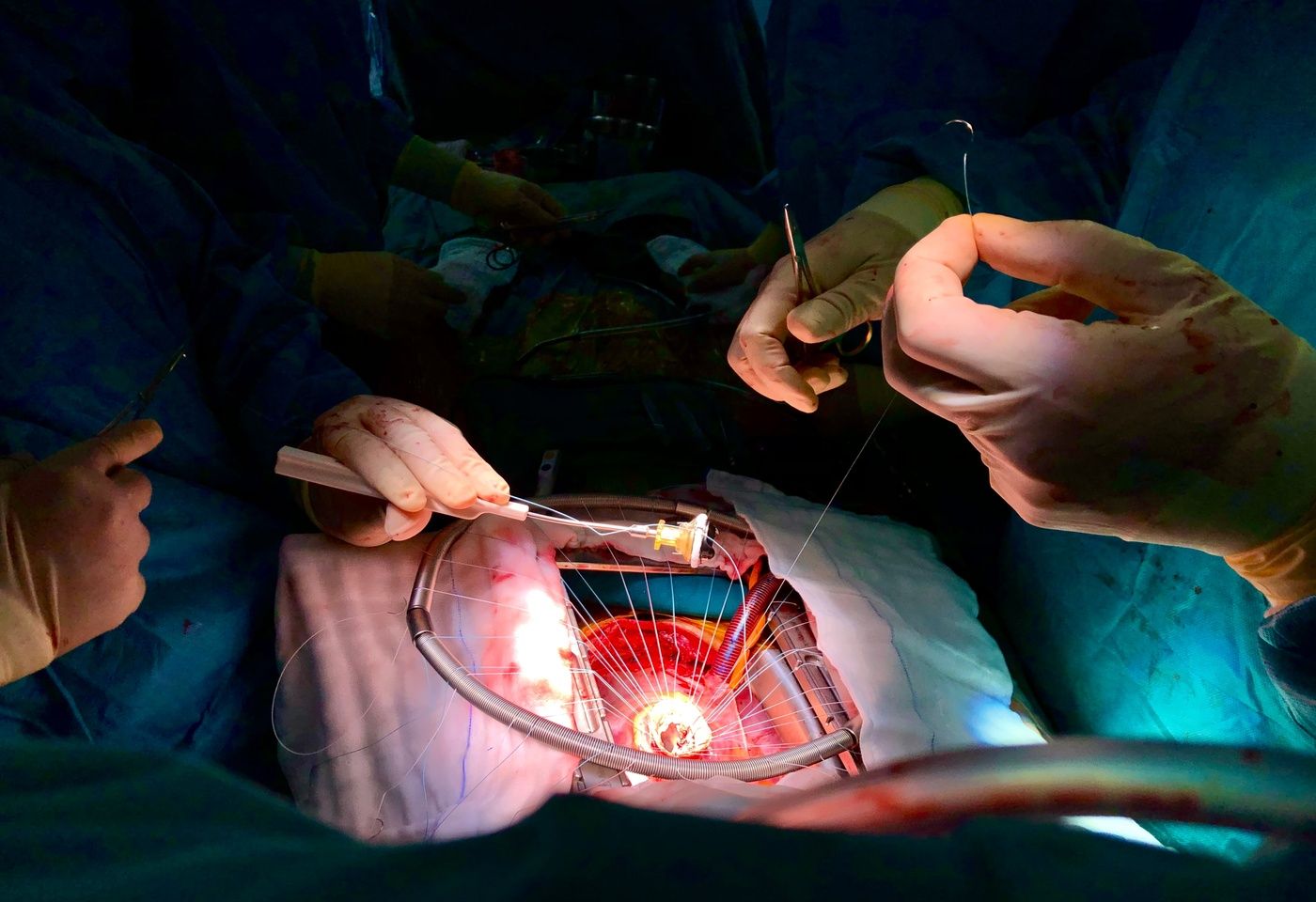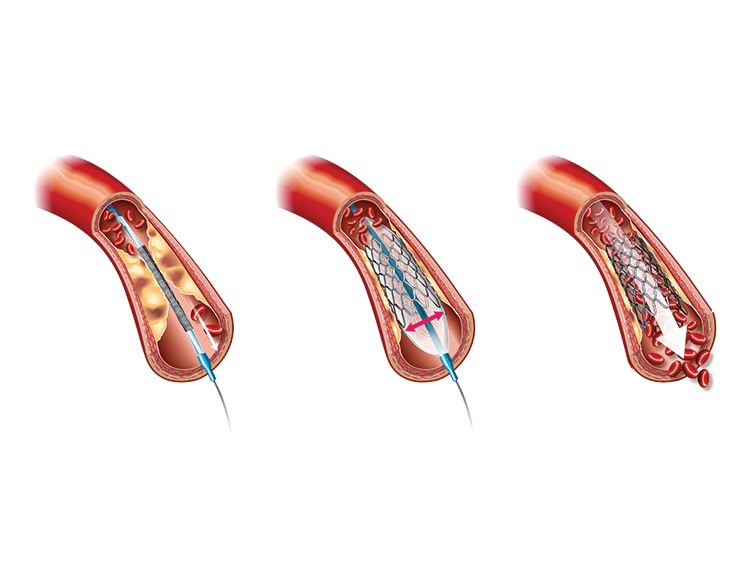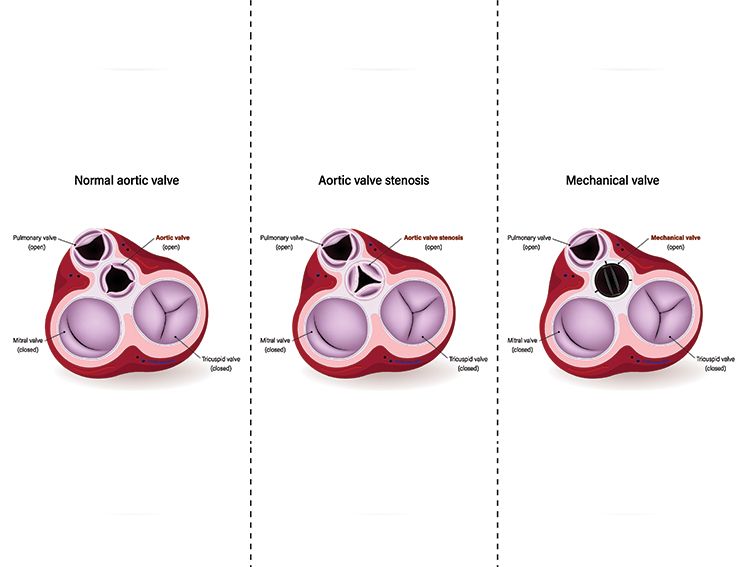
Introduction
The patient's age, though a key factor, is not the only one for considering the treatment approach for heart valve replacement. The decision is based on many other factors, such as the patient's medical conditions and anatomy, the associated risk and complications with specific treatment and the types of heart valves, their suitability in patient care, and their preferences. The type of treatment and the valve have long-term and short-term effects on the postoperative life of the patient. They are one of the deciding factors for the quality of life; a patient may expect a post-valve replacement, requiring careful consideration to make an informed decision.
Replacement Heart Valve
When a diseased valve cannot be repaired, or all the possible alternatives to treat the diseased valve are exhausted without desirable results, heart valve replacement becomes a must. The heart valve replacement surgery could be an open or a minimally invasive transcatheter valve replacement.
Once the decision to undergo treatment for the diseased valve is reached, the next step is to decide the type of replacement valve in conjunction with the treatment and other factors associated with the treatment's safety, efficacy, and clinically positive outcomes.
A replacement valve is a valve, either a tissue or a mechanical valve, that is used to replace the diseased or damaged heart valve. These valves could be-
- Tissue valve- A tissue valve is derived from animal tissue like bovine(cow), equine (horse) porcine (pig), or maybe a human donor valve from human tissue. A tissue valve is called a bioprosthetic or a biological valve. The human donor valve is known as an allograft or a homograft. The tissue valve lasts for approx. ten to twenty years after its placement. Tissue heart valves have a stent (scaffold) inside with the leaflets mounted externally or internally with respect to the stent. An extended ring of knitted fabric/ polyester is present around the base of the stent and this part is sewn into the heart to seat the valve.
- Mechanical valve- Mechanical or manufactured valves are made of carbon, titanium, or other sturdy materials. They are long-lasting and can survive the patient's rest of their life. The mechanical valve has two leaflets and a metal ring with a knitted fabric surrounding it. The fabric is stitched onto the heart, replacing the native valve.
What is Optimal Replacement Valve Type?
The success of heart valve replacement depends upon the clinical outcome of patients in terms of the durability, thromboresistance, implantability, and hemodynamics (heart pumping and unhindered blood circulation) of the replaced valve and how effectively the prosthetic valve mimics the native or original valve. The optimal valve aims to provide high longevity, safe implantability, high resistance to thrombosis (blood clots), and stable hemodynamics post-replacement.
Tissue valve v/s Mechanical valve
Choosing the most appropriate valve for replacement requires discussion with the healthcare provider about the treatment and the valve options, the associated risks, the compatibility and suitability of each treatment and valve, and the postoperative outcomes.
Tissue valves are used in open surgery and minimally invasive transcatheter valve replacement. They are considered less durable than mechanical valves, which can last for the rest of the patient's life. The durability of mechanical valves makes them more suitable for young patients undergoing valve replacement, often ruling out the need for re-operation to replace the valve.
However, mechanical valves require patients to take life-long blood thinning medication. Therefore, tissue valves are preferred in elderly patients over mechanical valves, as these patients are vulnerable to bleeding that often results from the blood thinning medication required in the case of mechanical valves. Tissue valves are considered for elderly patients as they are less likely to outlive the new valves.
In cases of patients already on blood thinning therapy of warfarin for another heart problem like deep-vein thrombosis or atrial fibrillation, a mechanical valve is the right option.
Types of Mechanical Valve
The types of mechanical heart valves are –
- The tilting disc mechanical valve- The second-generation mechanical valve has a titling circular occluder (a device that locks the hole in the heart) disc at the center. The metal ring of the valve is held by suturing it to the fabric surrounding the ring. The two supports, the inlet strut, and the outlet strut, hold the disc to flexibly open and close with every pumping of the blood through the valve.
- The bi-leaflets mechanical valve- As the name suggests, the valve has two semicircular leaflets attached that rotate. The rotation of the leaflets takes place around the struts. The struts are attached to the valve. Bi-leaflet mechanical valves provide smoother and more natural blood flow than the caged ball and titling disc valves.
Mechanical Heart Valve and its Role in Aortic Valve Replacement
Heart valve replacement is a significant medical decision and needs careful consideration. Out of the four heart valves, Aortic and Mitral valves are the two standard valves that generally require replacement. However, the Mitral valve mostly requires repair, while it is more common to replace an Aortic valve. Aortic valve replacement treats the diseased aortic valve (the valve connecting the left ventricle and the Aorta, the largest artery carrying blood away from the heart) by replacing the native valve with the new valve.
Aortic Stenosis is now not confined to older people, with rising cases of young patients suffering from narrowing and blockage of aortic valve due to sedentary lifestyle, stress, obesity, heredity, birth complications, or unhealthy diet.
Studies suggest that for Aortic valve replacement in patients under 50, a mechanical valve is preferred due to its durability and strength. A mechanical heart valve's longevity rules out the need for future valve replacement, as in the case of a tissue valve with a life span of 10-15 years. The valve is ideal for patients already on blood thinners for other cardiovascular diseases. Whether an open surgery or TAVR, mechanical valve dispenses with the need for future medical interventions, thus ensuring a smooth, normal, and healthy life after valve replacement for the rest of the life, provided one is regular with the blood thinning therapy to prevent blot clots. Using a suitable mechanical valve with smooth buffering can provide a quieter functioning of the valve, thus taking care of the click sound associated with the opening and closing of its leaflets.
Preparation and Recovery
As committed professionals, doctors do their job efficiently and responsibly in the operating theatre. Proper preoperative preparation and postoperative care are the most vital aspects of any treatment for speedy and healthy recovery. Going into the operative room well-informed about the treatment one is undergoing is half the battle won. The remaining half is when the patient or the caregiver takes accountability for the aftercare routine, follow-up, proper postoperative pain management, and care.
Preparation
- Gather all the facts about the procedure, including treatment, valve options, risks, benefits, and recovery.
- Before the procedure, have a discussion on medication to determine whether any should be continued or discontinued.
- Stay informed about the out-of-pocket and insurance aspects of the treatment cost.
- Discuss the diet plan and exercise routine to be followed pre-operation.
- Ask questions concerning your recovery and gain clarity on issues of pain management, medications, preventive measures, postoperative care, and restrictions to be observed.
Recovery
- Follow your doctor's instructions and advice.
- Ensure timely follow-up with your doctor for wound dressing and check-ups.
- Observe proper hygiene and wound care protocol and instructions.
- Incorporate a healthy and nutritious diet plan to fuel healthy growth and repair of cells.
- Take adequate rest for a speedy, fast recovery.
Stay positive.
MILTONIA from Meril
MILTONIA is a bi-leaflet mechanical heart valve from Meril with-
- High-performance material of pyrolytic carbon that guarantees excellent biocompatibility and superior safety.
- Suspended leaflets that enable fast opening and closing of the leaflets for the blood to flow sufficiently as per the physiological need of the patient.
- Smooth buffering that provides quieter functioning of the valve, reducing the leaflet's opening and closing sound.
- Open pivot design ensures a large opening and also reduces shear stress on the blood cells, thus minimizing damage to the cells. It also helps in ensuring passive washing of the hinge area and hence prevents blood clot formation.
Conclusion
No valve is optimal. Each has its benefits and associated risks or suitability and compatibility factors that one needs to consider while selecting the replacement valve. There is no 'one size fits for all.' However, a suitable replacement valve offers efficient valve functioning and operates effectively and amicably with the patient's circulatory system.
Similarly, like every operative procedure, heart valve replacement also has associated risks and complications like surgical site infection, bleeding, stroke, or heart attack, and the benefits in terms of reduced symptoms, enriched life, increased chances of survival, and freedom from pain and discomfort.
An informed patient is an empowered patient. Become aware of the medical condition requiring immediate medical intervention, the need for proper and timely diagnosis, the pros and cons, the risks and benefits of the various treatment modalities, the recovery, and other related aspects.
SHARE NOW



